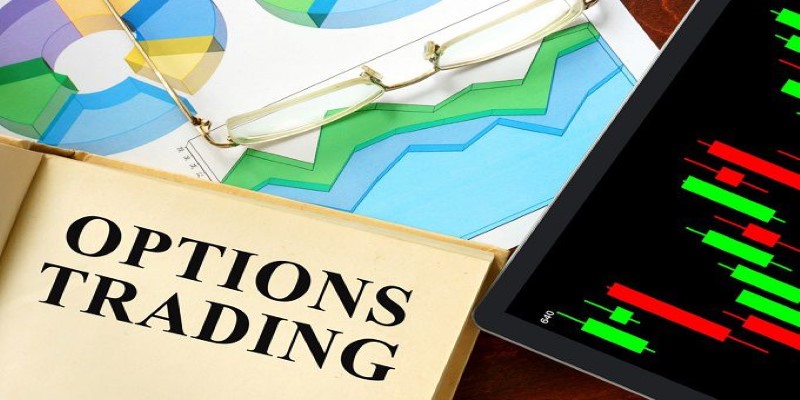Exploring Cyclical Stocks: A Primer on Investment Opportunities
When navigating the complexities of the stock market, investors encounter diverse options, each with its unique traits and potential rewards. Among these choices, cyclical stocks stand out as a compelling category deserving attention. These stocks are intricately linked to the ebb and flow of economic cycles, their fortunes rising and falling in rhythm with broader economic trends.
This guide delves deeper into cyclical stocks, unraveling their essence, distinctive features, and the intricate dance they perform within the investment landscape. Investors can better understand how cyclical stocks fit into their investment strategy by shedding light on their defining characteristics and the opportunities they present.
What Are Cyclical Stocks?
Cyclical stocks represent ownership in companies whose financial well-being ebbs and flows in sync with the economic tide. These businesses are deeply intertwined with the pulse of economic activity, thriving when the economy booms and struggling when it falters. Found primarily in sectors susceptible to fluctuations in consumer behavior and business confidence, cyclical stocks mirror the broader patterns of economic expansion and contraction.
From consumer discretionary goods to manufacturing and construction, these industries rely heavily on consumer spending, corporate investment, and overall economic vitality. Consequently, the performance of cyclical stocks is intimately linked to shifts in consumer sentiment, business sentiment, and broader economic indicators, making them a barometer of financial health and a unique opportunity for investors attuned to economic cycles.
Characteristics of Cyclical Stocks
Cyclical stocks, often dubbed the economy's heartbeat, exhibit distinctive characteristics that set them apart in the realm of investment. Let's delve into these attributes.
Economic Sensitivity:
One of the defining characteristics of cyclical stocks is their sensitivity to economic fluctuations. During economic prosperity, these corporations typically encounter heightened demand for goods or services, resulting in augmented revenues and profits. Conversely, demand may decline during economic downturns, resulting in lower earnings for cyclical companies.
Industry Dependence:
Cyclical stocks are often found in manufacturing, construction, automotive, and travel and leisure industries. These sectors tend to experience significant fluctuations in demand depending on the economy's overall health. For example, consumer discretionary companies, which produce non-essential goods like automobiles, furniture, and apparel, are considered cyclical because consumer spending tends to rise and fall with economic conditions.
Volatility:
Due to their dependence on economic conditions, cyclical stocks are typically more volatile than defensive or non-cyclical stocks. During periods of financial uncertainty, investors may be more inclined to sell off cyclical stocks, leading to sharp price swings. However, these stocks can also deliver outsized returns during economic expansions as demand and earnings growth accelerate.
Examples of Cyclical Stocks
Cyclical stocks encompass a wide range of industries that experience significant fluctuations in demand based on economic conditions. Here are some examples:
Automobile Manufacturers:
Companies in the automotive industry, such as Ford and General Motors, are classic examples of cyclical stocks. During economic upturns, consumers may be more willing to purchase new cars, increasing sales and profitability for these companies. However, during economic downturns, demand for automobiles tends to decline, putting pressure on revenues and profits.
Airline Companies:
Airlines are highly sensitive to changes in economic conditions and consumer spending. During periods of economic prosperity, consumers may have more disposable income to spend on travel, leading to increased demand for air travel. Nevertheless, in periods of economic downturn or uncertainty, consumers tend to reduce discretionary spending, which can significantly impact airline revenues and profitability.

Investing in Cyclical Stocks
Investing in cyclical stocks can offer opportunities for potential growth and capital appreciation, especially during periods of economic expansion. However, it's essential to consider the following factors before adding cyclical stocks to your investment portfolio:
Economic Outlook:
Since the performance of cyclical stocks is closely tied to economic conditions, it's crucial to understand the current economic environment and outlook clearly. Assessing factors such as GDP growth, unemployment rates, consumer spending, and business investment can help gauge the economy's health and identify potential opportunities in cyclical sectors.
Timing:
Timing can be critical when investing in cyclical stocks, as economic cycles can be unpredictable. Investors may look to enter cyclical sectors during periods of economic recovery or early expansion when demand and earnings growth are expected to accelerate. Conversely, they may reduce exposure to cyclical stocks during late-stage expansions or economic downturns when demand is expected to weaken.
Diversification:
As with any investment strategy, diversification is critical to managing risk when investing in cyclical stocks. By spreading investments across different sectors and industries, investors can reduce the impact of downturns in any single sector on their overall portfolio. Additionally, combining cyclical stocks with defensive or non-cyclical investments can help offset volatility and stabilize during economic downturns.
Risks of Investing in Cyclical Stocks
While cyclical stocks can offer growth opportunities, they also come with inherent risks that investors should be aware of:
Economic Downturns:
Cyclical stocks are particularly vulnerable during economic downturns, as declining demand and weakening economic conditions can lead to lower revenues and earnings for cyclical companies. During periods of recession or economic contraction, cyclical sectors may underperform the broader market, leading to potential investor losses.
Industry-specific Risks:
Certain cyclical industries may face additional risks specific to their sector, such as regulatory changes, technological disruptions, or supply chain disruptions. For example, changes in fuel efficiency standards, shifts towards electric vehicles, or supply chain constraints may impact the automotive industry.
Financial Leverage:
Some cyclical companies may carry high levels of debt or financial leverage, which can amplify the impact of economic downturns on their financial health. During periods of economic stress, companies with high debt levels may struggle to meet their debt obligations or finance ongoing operations, leading to potential bankruptcy or financial distress.

Conclusion:
In conclusion, cyclical stocks are shares of companies whose performance is closely tied to the economic cycle. These companies operate in industries that experience significant fluctuations in demand depending on the economy's overall health. While investing in cyclical stocks can offer opportunities for growth and capital appreciation, it's essential to understand the inherent risks and volatility associated with these investments.
By carefully assessing economic conditions, diversifying across sectors, and managing risks, investors can effectively incorporate cyclical stocks into their investment portfolios and potentially capitalize on opportunities for growth in the broader economy.












